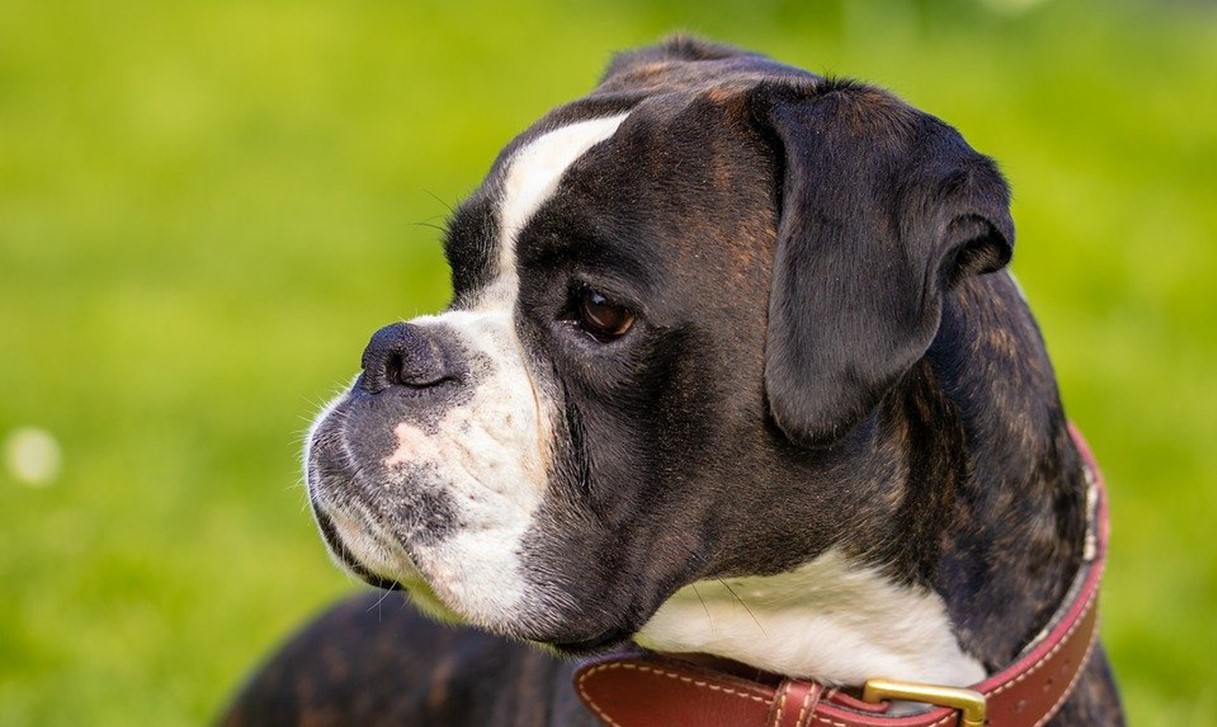The Boxer may have a troubled expression on his furrowed brow. Still, he isn’t anxious about being loved: he is one of America’s most beloved dogs. That’s not surprising, given that he’s a happy, faithful friend who has a strong link with his owner. A well-socialized Boxer is friendly with kids and people he recognizes, cautious and attentive but not violent with outsiders, and always up for a stroll, a game, or even some quiet time on the couch with you.
The Boxer is an excellent option for an owner who will consistently, forcefully, and adequately train him and who can laugh at the dog’s stubbornness. It is a big dog who can do a lot of harm if he’s lonely or bored, so he requires plenty of activity to keep his good spirits in control.
He’s up for practically any organized dog sport, including agility, obedience, and flyball. While any dog-child interaction must be supervised, Boxers are usually friendly with kids and make excellent family pets.
The look on the Boxer’s face is undeniable: furrowed and anxious, despite his square jaw, aristocratic head, and confident swagger. He’s a giant dog, weighing up to 70 pounds, and females are much smaller than males. His short coat sheds, but he’s otherwise a low-maintenance dog.
The Boxer is available in tan, brindle, and white colors. The white Boxer is the subject of much debate because, for years, breeders have slaughtered their white puppies rather than trying to find their families as pets. This is now largely regarded as inappropriate, and there are more white Boxers available to buy and adopt. Read more on this link https://lensandleash.com/10-things-you-need-to-know-before-adopting-a-boxer/.
Personality

They are joyful dogs who have a lot of fun. They are willing to play with friends and family, and they are kind and friendly with kids. Boxers are also loyal, and anything that threatens their family members will be met with bravery.
Although boxers are brilliant, they do not usually take training seriously. Be strict, fair, and persistent with your Boxer for the best outcomes. Appropriate rewards and penalties will teach him that when he performs what you want, nice things happen, and disobedience is never rewarded.
They are skilled at detecting flaws in the regulations and will use them to see what they could get away with. And get started right away! Your eight-week-old pup will be easier and more enjoyable to train than his older, more recalcitrant eight-month-old counterpart. To entice and motivate him, use gifts, toys, and praise.
Playing fetch, taking him for a long walk, or training him for agility or another activity are all good ways to relieve a Boxer’s energy. One or more Boxers have herding titles, which is one of the breed’s original functions. Their forefathers were all-purpose farm canines who were responsible for catching and driving animals.
This breed can become the pet of your fantasies with structure, training, and plenty of exercise and sports. Without those things, he has the potential to become a nightmare. The amount of destruction that a bored Boxer can cause is unimaginable. Don’t give him the chance to educate you.
Grooming
The Boxer is a low-maintenance dog. His smooth, short coat benefits from weekly cleaning with a hard bristle brush or a rubber brush to keep it lustrous and healthy, as well as to eliminate dead hairs which would otherwise end up on your furniture.
Bathing your pet regularly is not required unless it looks messy. Still, with today’s mild dog shampoos, you can wash him weekly if you wish without hurting his coat. Use a solution advised by your veterinarian to clean the ears as needed. Cotton swabs should not be used inside the ear since they can push muck deeper down. Wipe the ear out with a cotton ball, avoiding going deeper than your first knuckle.
Trim your nails once or twice a week or as necessary. Don’t let them get to the point where they’re clicking on the ground. Click on this page for more.
Training
Owners may find it easier to train their boxers because they are quick learners. They, as we briefly said previously, are determined canines that can be stubborn at times.
As a result, an individual who has never dealt with a dog’s tenacity may find it more difficult to train them. Even though a new pet parent can raise a well-behaved dog, the prior experience can be beneficial. Boxer training normally involves a great deal of compassion, tolerance, and persistence.
Negativity and severe corrections are very difficult for this breed. Motivation, discipline, consistency, and positive reinforcement are all important aspects of boxer training. Because of the closeness and trust that is formed, many owners believe that coaching a dog like this has to be quite satisfying. This breed will eventually look to its owner for guidance, which they will definitely obey.
The toughest part of training this breed, according to owners, is leash training. You should know that the Boxer’s size and strength enable him to automatically pull or yank when they attempt to walk past their owner. Working on any behavioral issue as soon as possible is the greatest strategy to combat it.
When it comes to leash training or jumping, numerous suggestions, tactics, and training techniques can help. It may take some time and experimentation to find a remedy for any unpleasant behavior. And, obviously, a great deal of patience and love.

